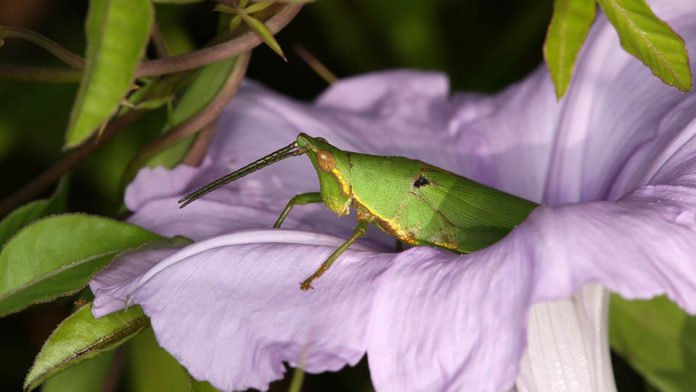Orthopterans like grasshoppers and crickets are broadly perceived as agricultural vermin as they eat and destroy food crops. A new National University of Singapore study suggests that their tropical relatives significantly affect plant administration by serving as pollinators.
Mr Tan Ming Kai, a PhD student from the Department of Biological Sciences at the NUS Faculty of Science said, “When people think of pollinators, bees and butterflies are usually the first that come to mind. There are very few records of orthopterans that visit flowers, and none of the studies involve Southeast Asian orthopterans.”
Scientists conducted overviews in five Southeast Asian nations and found that orthopterans visit blooms more much of the time than previously known, and they fertilize the flowers they visit.
Mr Tan said, “Given that more orthopteran species are being discovered in this region, there is a pressing need to better understand the biological roles they play, particularly when they visit flowering plants, and how they contribute pollination services for urban plants and agricultural crops.”
The research team conducted field surveys across different vegetation and localities in Singapore, Malaysia, Thailand, Brunei Darussalam, and Indonesia to better understand orthopterans’ roles in pollination ecology between 2015 and 2018. The study involved day and night surveys during which flower-visiting orthopterans were searched and recorded using photographs and videos.

They recorded 140 occurrences of orthopterans visiting flowers across the site studied, among which 41 orthopteran species were recorded to visit flowers of 35 plant species. Of the 41 species, 19 were katydids, 13 were grasshoppers, and nine were crickets.
Scientists also discovered two main types of flower-visiting orthopterans – firstly, katydids that are floriphilic, clearly preferring flowers over other plant parts as their diet; and secondly, opportunistic folivores, such as cone-headed katydids (Conocephalus species) and Bukit Timah’s cricket (Tremellia timah) which typically consume leaves, but consume flower matter when available.
To examine how P. brevis’s feeding behaviour contributes to pollination, the research team observed how P. brevis feeds on the flowers of the Hairy Beggarticks Bidens pilosa L. (Asteraceae), a tropical to warm temperate North and South American plant that grows in grasslands and scrublands close to urban areas in Singapore.
Close observation of the video recordings showed that the sickle-bearing katydid fed on the flowers without damaging the parts of the flowers by gently collecting the pollen grains. Pollen grains attached to the antennae and legs of the katydid facilitated pollination.
During experiments, scientists found that the chance of these flowers producing seeds was about three times higher.
Assoc Prof Tan said, “Our findings suggest that current knowledge of orthopterans as flower-visitors and their role in pollination ecology is still in its infancy.”
Here’s more reading you might find interesting:
- What do grasshoppers eat?
- Pesticide exposure causes bumblebee flight to fall short
- Scientists studied flower that catapults pollen
The researchers hope to conduct more studies to understand better how orthopterans can function as pollinators and harmful plant-eaters and how these unconventional pollinators co-evolve with plants.
Journal Reference
- Tan MK, Artchwakom T, Abdul Wahab RH, Lee C-Y, Belabut DM, Wah Tan HT (2017) Overlooked flower-visiting Orthoptera in Southeast Asia. Journal of Orthoptera Research 26(2): 143-153. DOI: 10.3897/jor.26.15021
